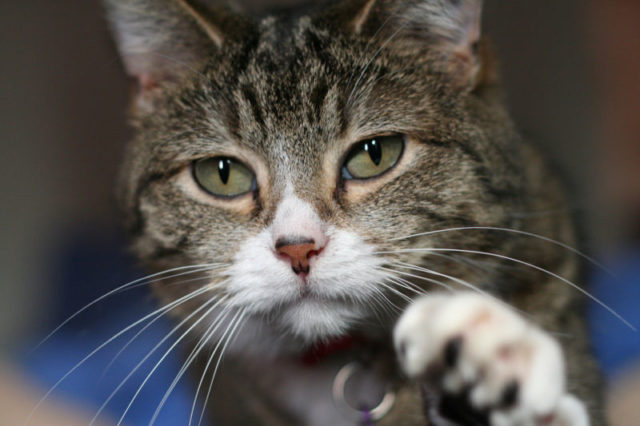2,000 years ago, a group of Native Americans buried a bobcat as if it was a human. The cat’s burial ceremony involved it wearing a necklace or some sort of collar made from seashells and bear teeth, and it was placed within a sacred burial mound meant for humans. The discovery was made in western Illinois, it is the only notable ceremonial burial for an animal in such a mound, and some specialists think it might have been a very much loved pet.

The hill, which overlooks the Illinois River around 80 kilometers (49 miles) north of St Louis, is one of the 14 in the area made by the Hopewell culture, who were known as hunters, traders, and gatherers. They were also recognized for their animal artworks. It is also believed by the State Archaeological Survey employee Kenneth Farnsworth that the villages would congregate together to bury individuals within these hills, saying that it was a way to show others that the land belonged to the ancestors.
They were initially excavated in the 1980s, with the biggest measuring 28 meters (91 ft) in diameter and being 2.5 meters (8 ft) high. It has been revealed that 22 people were buried in a ring about the tomb.
Because the Hopewell are known to have buried their dogs, the cat was initially thought to have been a puppy. However, searching through the collections of the Illinois State Museum in Springfield in the year of 2011, Angela Perri realized that the skull was definitely not from a dog of any sort. The zoologist Max Planck of Germany immediately recognized that bones were actually those of a cat.
Upon closer inspection, the remains appeared to belong to a bobcat that was about four to seven months old, and there were no traces of trauma, or anything to indicate that it was a sacrifice. It was also noted that the cat was placed in the grave with its paws placed together. Many were shocked by the finding, including Dr. Farnsworth who stated that he has never seen anything like. He believes that it was an important member of the community, otherwise the natives would not have gone against the rules and allowed the cat to be buried within the human hill.
Bobcats are twice as big as modern domestic cats, and almost impossible to tame. It has been theorized that the animal was taken in by the natives as an orphan, which is how it became domesticated.
Yet, Melinda Zeder, a zoologist located at the Smithsonian Institution’s National Museum of Natural History in Washington, DC believes that if the cat was an actual pet, it would have been buried alongside the Hopewell’s dogs on a separate hill. As an alternative, she believes that the bobcat might have been spiritually significant to them. Sometimes, animal effigies were utilized by the Hopewell to represent the guardian spirit of the shaman.

Around 200 BC, Native American cultures established themselves and spread all throughout the Midwest from about 200 BC. Hopewell camps usually were smaller and temporary, with people frequently moving to from place to place in search of trade and resources. Tiny hamlets included a smattering of rectangular formed homes with thatched roof tops, and their inhabitants were the farmer, gatherers, and hunters. They ate and grew squash and sunflower seeds; the beginning of mass farming in American Indian culture.
Artwork was traded, and frequently portrayed animals like birds, deer, bears. Burial hills were utilized as a central point for several religious ceremonies, including funerals. Goods have been discovered inside that demonstrate that people lived within hierarchical structures. The Hopewell culture started to mysteriously decline in about 400 AD. Archaeologists have suggested that this happened because of a cultural collapse within communities, and a move to bigger, permanent settlements. Technological advances, such as the bow and arrow, might have also spelled the end for the Hopewell way of life, causing communities to be detached.
